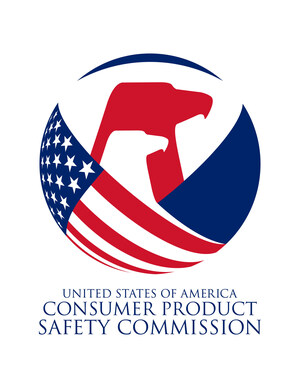WASHINGTON, Dec. 19, 2017 /PRNewswire-USNewswire/ -- https://www.cpsc.gov/Newsroom/News-Releases/2018/CPSC-Hails-Successes-of-Virginia-Graeme-Baker-Pool-Spa-Safety-Act-as-Law-Hits-10-Year-Mark
Today, the U.S. Consumer Product Safety Commission's (CPSC) Pool Safely campaign marks the 10-year anniversary of the Virginia Graeme Baker (VGB) Pool & Spa Safety Act, being signed into law by President George W. Bush. The VGB Act is one of the reasons for great improvements in water safety and drowning prevention, including a full decade with zero drain entrapment-related deaths involving children in public pools and spas.
"CPSC's Pool Safely campaign exists because of the Virginia Graeme Baker Pool & Spa Safety Act," said CPSC Acting Chairman Ann Marie Buerkle. "These achievements over the past 10 years would not be possible without the work of the dedicated people of the water safety community. This year's announcement of a 17 percent decrease in fatal drownings among young children in pools and spas highlights the progress made."
The VGB Act was the result of Virginia Graeme Baker, a 7-year-old girl, passing away in June 2002, after a drain entrapment incident in a hot tub. Graeme was the daughter of James and Nancy Baker, and the granddaughter of former Secretary of State, James Baker III. After her death, the girl's family became advocates for pool and spa safety to ensure that drain entrapment incidents would not happen to other children. Advocacy by Virginia Graeme's family, and other families suffering similar tragedies, as well as activism by child safety organizations, led to the creation and passage of the VGB Act in 2007.
"On this 10th anniversary of the legislation's passage, the statistics point to a significant reduction in drowning injuries and fatalities, and, to date, the elimination of entrapment in public pools," said Nancy Baker, Graeme's mother. "That many lives have been saved and families spared unimaginable grief is the greatest tribute to the memory of the children who lost their lives due to inadequate safety requirements and the lack of comprehensive drowning prevention education. The VGB Act stands as the first federal legislation to address this public health crisis. My hope is that this anniversary marks a celebration of, not only, our achievements, but also a strong commitment to continued efforts to save children from drowning and entrapment in the years to come. I can think of no greater way to honor our children."
The VGB Act is designed to enhance the safety of pools and spas by reducing child drownings and suction entrapment incidents, injuries and deaths. The law includes a public education program focusing on the importance of child water safety and drowning prevention.
"Despite the successes and hard work of the past 10 years, there is always more to do to prevent child drownings," said Buerkle. "Working together across the water safety community and with innovative public-private partnerships, we can continue to reduce the number of drownings, which is the leading cause of accidental death for young children."
The CPSC's Pool Safely education campaign teaches simple steps that save lives around swimming pools and spas, including:
- Install a four-sided fence with a self-closing, self-latching gate around all pools and spas.
- Designate an adult Water Watcher to supervise children at all times around the water.
- Learn how to swim and teach children how to swim.
- Learn how to perform CPR on children and adults.
- Teach children to stay away from pool drains, pipes and other openings to avoid entrapments.
- Ensure every pool or spa has drain covers that comply with federal safety standards.
Annually, nearly 350 children younger than age 15 fatally drown in a swimming pool or spa and an estimated 5,900 children were reported as being treated in hospital emergency rooms for non-fatal drowning injuries in pools or spas.
About Pool Safely
The Pool Safely campaign (www.PoolSafely.gov) is a national public education effort launched in 2010 by the U.S. Consumer Product Safety Commission (CPSC) to reduce fatal child drownings, non-fatal drownings and entrapments in swimming pools and spas. The campaign focuses on populations most at risk of drowning: children younger than 5 years old (who represent nearly 75 percent of child drowning fatalities) and African-American and Hispanic children between the ages of 5 and 14, who, according to the Centers for Disease Control and Prevention, drown at higher rates than white children. CPSC reports that annually there are more than 300 pool or spa-related drownings for children younger than 15.
Pool Safely, a national public education campaign supporting the requirements of Section 1407 of the Virginia Graeme Baker Pool and Spa Safety Act, works with partners around the country to reduce child drownings, non-fatal drownings and entrapment incidents in swimming pools and spas. Parents, caregivers, and the media are encouraged to visit: PoolSafely.gov or @PoolSafely on Twitter for vital safety information regarding the prevention of child drownings in and around pools and spas.
About U.S. Consumer Product Safety Commission
The U.S. Consumer Product Safety Commission (CPSC) is charged with protecting the public from unreasonable risks of injury or death associated with the use of thousands of types of consumer products under the agency's jurisdiction. Deaths, injuries, and property damage from consumer product incidents cost the nation more than $1 trillion annually. Visit www.cpsc.gov for more information.
CPSC Consumer Information Hotline
Contact us at this toll-free number if you have questions about a recall:
800-638-2772 (TTY 301-595-7054)
Times: 8 a.m. – 5:30 p.m. ET; Messages can be left anytime
Call to get product safety and other agency information and to report unsafe products.
Media Contact
Please use the phone numbers below for all media requests.
Phone: 301-504-7908
Spanish: 301-504-7800
SOURCE U.S. Consumer Product Safety Commission
Related Links
WANT YOUR COMPANY'S NEWS FEATURED ON PRNEWSWIRE.COM?
Newsrooms &
Influencers
Digital Media
Outlets
Journalists
Opted In





Share this article